Last Updated on February 19, 2021 by Red Nomad OZ
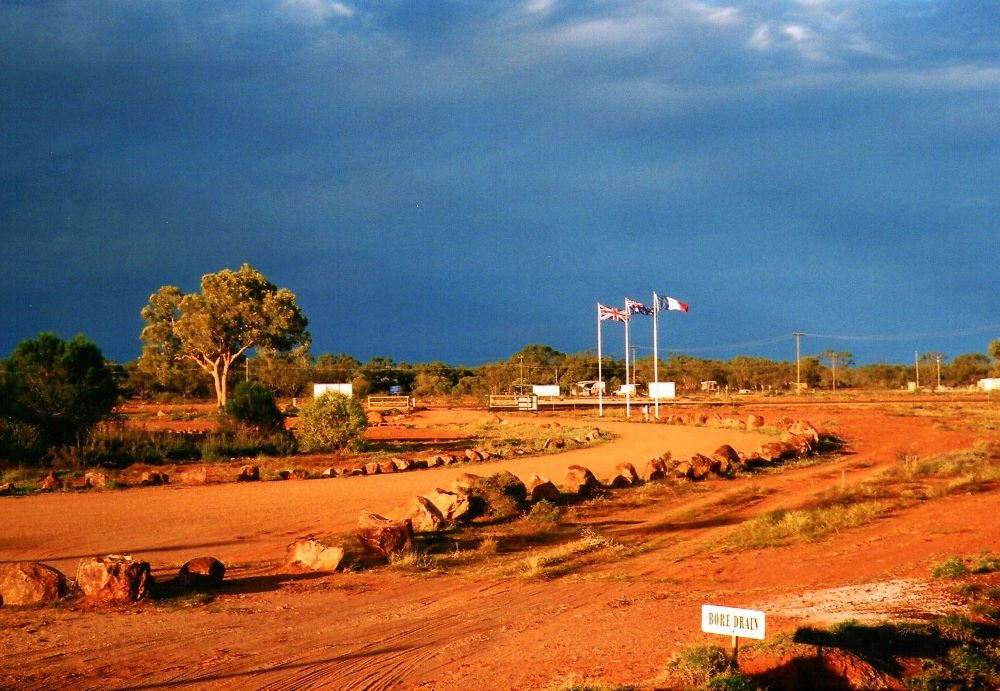
Thargomindah is conveniently located between Eulo and Noccundra – two other Outback Queensland localities you’ve probably never heard of. At over 1000 km (620 miles) west of Brisbane, it’s not a place you come across by chance. But there are plenty of things to do in Thargomindah. As part of the Adventure Way, a self-drive trail from Brisbane to Innamincka just over the South Australian border, it’s worth stopping over to see what this remote Outback area has to offer.
The Bulloo in Flood
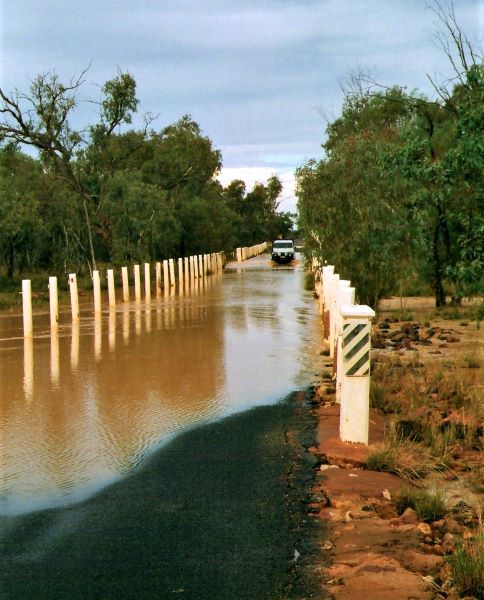
The Bulloo River was in flood when we arrived. And getting into Thargo, as the locals call it, meant crossing the river at the town’s eastern entrance.
That gave us a rare opportunity to test our camper trailer’s ability to withstand over 30 cm (12 inches) of flood waters over the causeway by driving through it.
Thargomindah’s hydro-electric scheme

When the bore was first drilled, water was first found at a 795 metre (2608 feet) depth. With around 1300 cubic metres of water at 84 degrees C produced per day, the pressure was used to generate the town’s electricity supply, Australia’s first hydro-electric scheme. The bore is part of Australia’s Great Artesian Basin, a network of underground aquifers covering 1.7 million square kilometres that makes living in many outback areas viable.
The bore is critical to the town’s survival in more ways than one and its mysteries can be discovered by taking a tour. Our tour guide pointed out some bristles in the pool below the outlet – apparently dead pigs are sometimes left in the hot water overnight to cook them and make skinning easier! SOOO devastated we didn’t get to see this phenomenon for ourselves!!
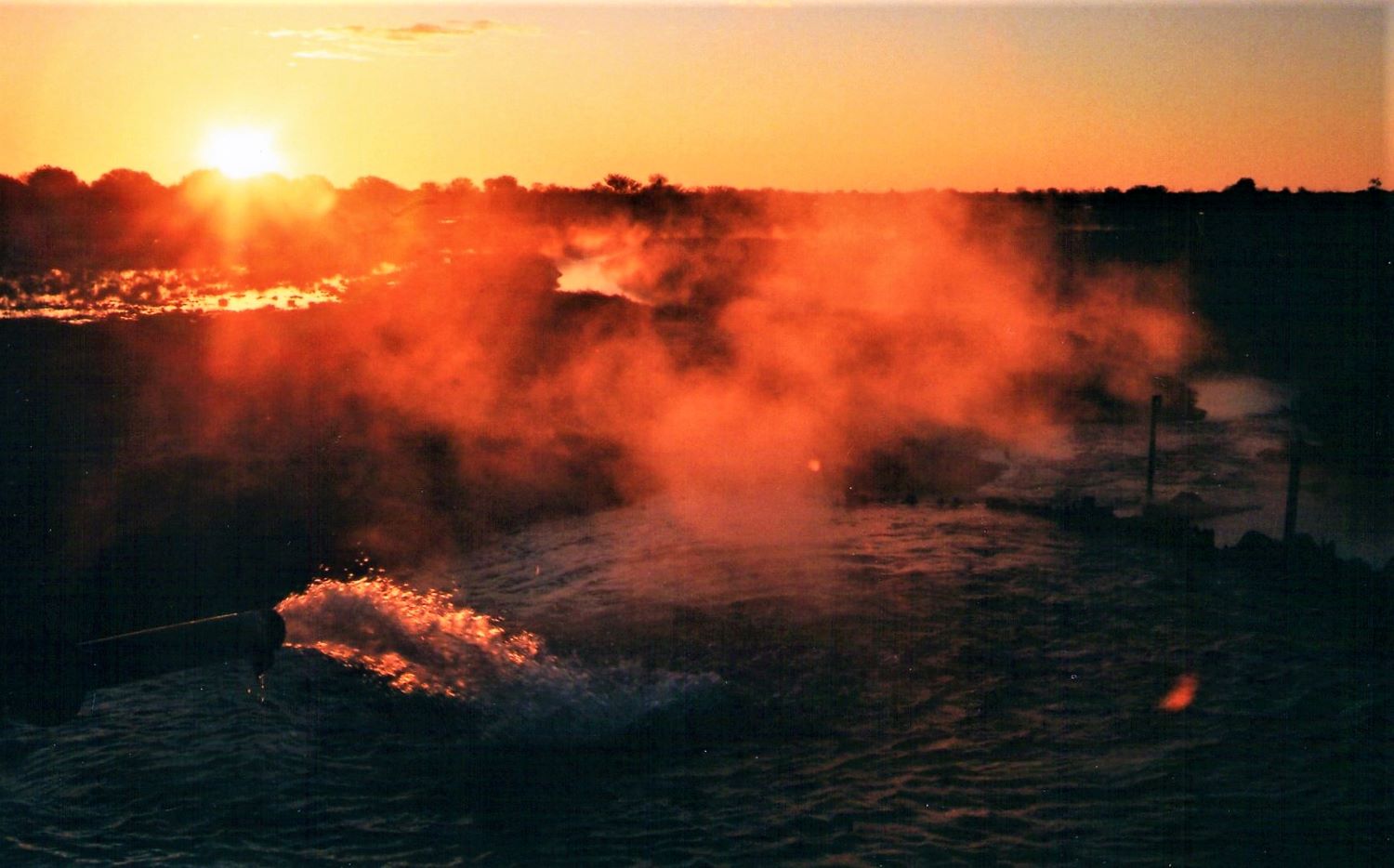
We did get to experience sunset at the bore though, when the steam rising from the hot water against a setting sun made wonderful photo opportunities.
The importance of water in the Outback
When I first saw Frederick White’s sculpture ‘Drawing Water’ from a distance, I thought it was an unfinished public amenities block. That’s how much I know about art.
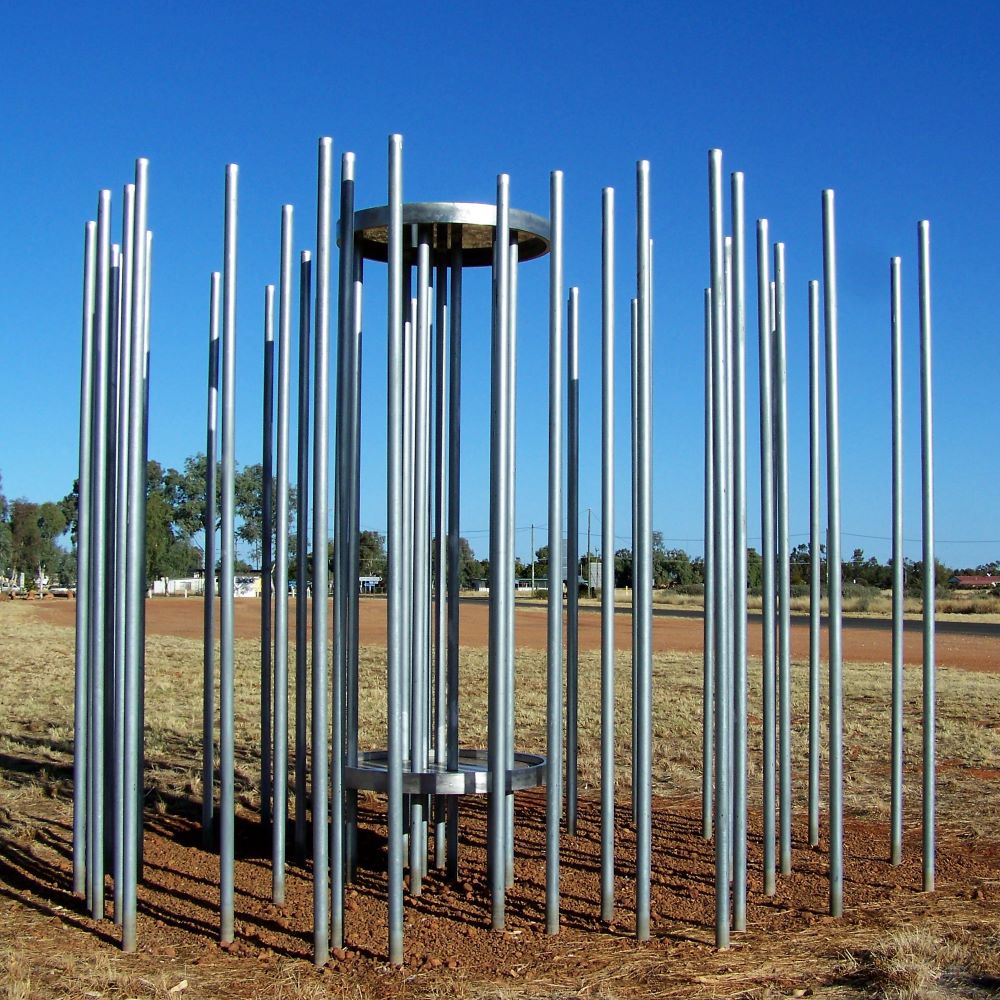
But the sculpture is actually a clever reminder of Thargomindah’s reliance on bore water. Its 52 poles symbolise the 4,700 bores that deliver a reliable source of water to Outback Australia, without which the area would be uninhabitable for much of the year. The outback bore’s average depth of 500 metres (1640 feet) is represented by reflective discs in the centre. Ironically, these were covered in dust, with no sign of the floods that had isolated the town for several months earlier that year.
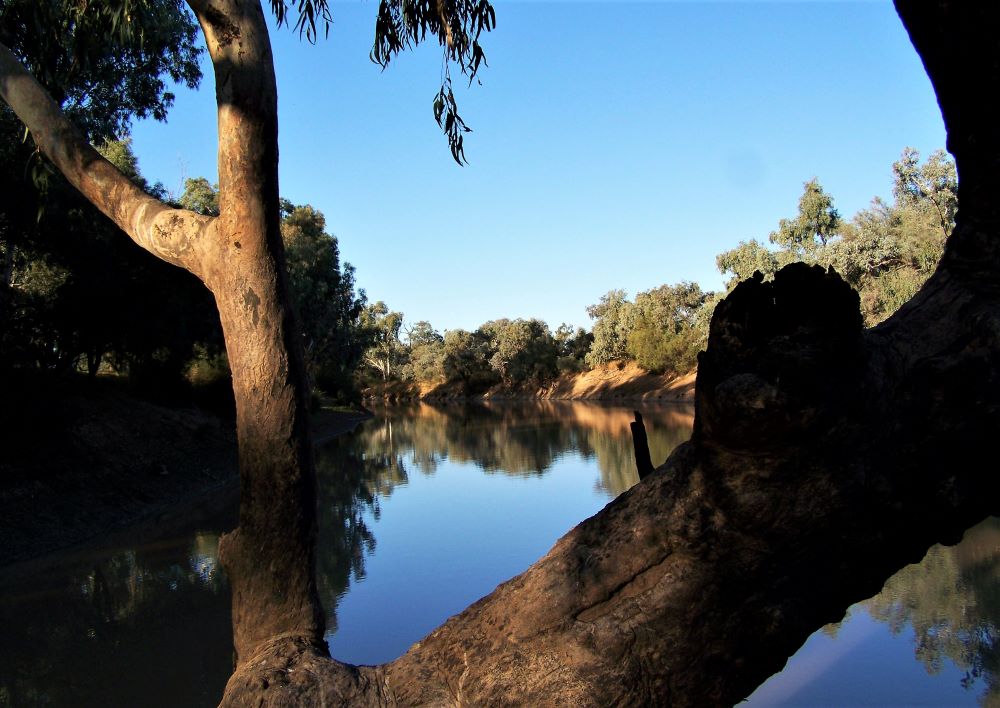
The manager of the Explorers Caravan Park where we stayed says rain often bypasses the town and falls further north in the catchment area, causing the river to flood. The amount of water lying in the street made us think it must rain quite often – but the street water came from sprinklers and hoses running 24/7 to ensure a ready supply of hot water from the bore. Modifications completed since our visit ensures this no longer needs to happen. But having a reliable water supply means that the townsfolk can have green lawns and gardens in the middle of the outback all year round.
Thargomindah Town Attractions

Start your search for things to do in Thargomindah at the Visitor Information Centre. It’s located in the old Thargomindah hospital complex, also an historic museum. Made from mud bricks, the building started life as a hospital in 1888. Later it accommodated a visiting service from the Flying Doctor base in Charleville, and an outpatient clinic. Mud brick buildings were common in the early days, but the old hospital is one of the few remaining buildings of this type.

Leahy House is also made from mud brick and now houses a museum. The house was once owned by Sir Sidney Kidman, the well known cattle baron. Its permanent displays and exhibitions offer another insight into the history of the region, as does the Old Jail.
An old Cobb & Co crossing below the Bulloo River bridge is the start of the River Walk, and also part of the town heritage walk. This dodgy and rocky river crossing was once the main access to town, meaning no access when the river was in flood. In the 1890’s, Thargo was the centre for Cobb & Co coaches servicing the surrounding area, once the only way of moving between towns.
For a good introduction to the things to do in Thargomindah, take one – or all – of its three town walks. The scenic Bulloo River Walk follows the river from the Cobb & Co Crossing to the Pelican Point Picnic area. The Heritage Walk winds through the town past buildings and sites of interest. The Hydro Walk starts in town, passes the new bore and continues to the Hydro Power Plant display.
Lake Bindegolly National Park
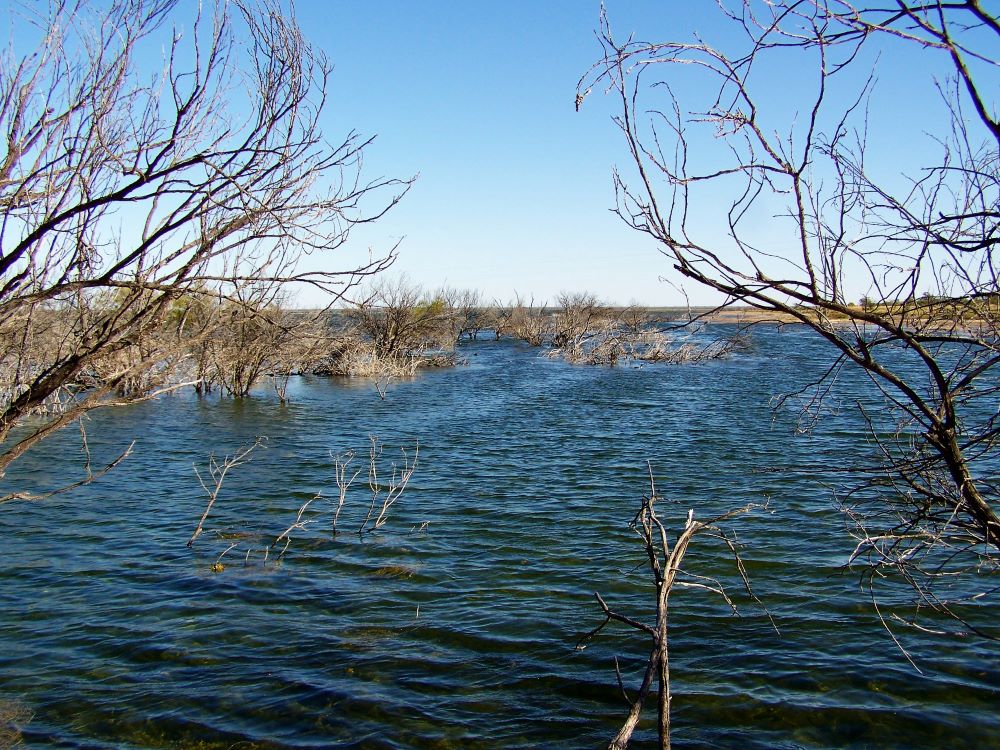
Nearby Lake Bindegolly was completely dry on our first visit, making birdwatching a bit pointless. The number of birds spotted as we trudged the 9.5 km (5.9 mile) circuit track around this dusty wasteland was easy to count. Zero.
Luckily, on our next visit the lake was full. And not just full, chock-a-block FULL!! Lake Bindegolly, part of a chain of lakes that form the Lake Bindegolly National Park, covers much of the Park’s 14,000 hectares (54 square miles). The birds had re-discovered the lake, and returned with a vengeance.

Easily visible from the road, thousands of Great Crested Grebe were nesting. We watched as they cavorted on the water around us, swimming, hunting, fighting, building nests, hatching eggs, playing dead when they spotted us.
Back at the car was another problem. Unable to manage parking in one of the many empty spots in this spacious car park, the only other tourist for miles had parked directly behind us. Whether she or he intended to box us in is unknown as we didn’t exchange words. But it’s definitely possible she or he didn’t figure on Pilchard’s ability to execute a 17 point turn to extricate us, a masterclass in precision driving.
Thargomindah Fast Facts
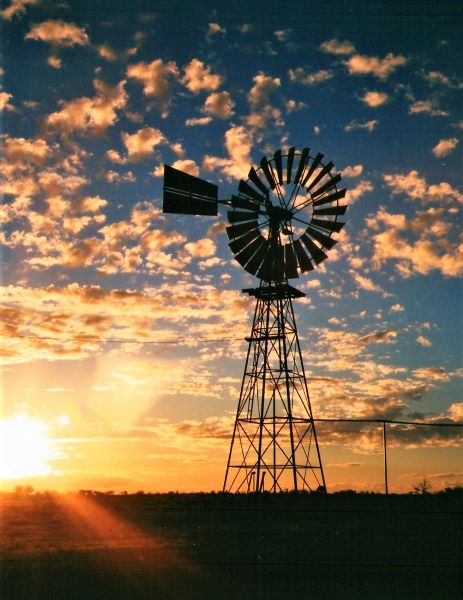
- Where: 1000 km west of Brisbane, 200 km west of Cunnamulla
- How to get there: Self-drive the Adventure Way, Thargomindah is on the Bulloo Developmental Road
- Facilities: Supermarket (with hardware), Roadhouse (with meals), Pub, Post Office, Community Centre with internet access, Library, Swimming Pool, public park with Barbecues
- Where to Stay: Two motels and a caravan park in town, and a station stay 90 km south.

Thanks for the tour! Your fellow traveller’s parking decision is such a mystery. Safety in numbers?
It is good to see you posting again.
Christie
Glad you enjoyed the ride, Christine! That’s the only rational explanation – but I haven’t ruled out irrational behaviour either 😀 Stick around … I’ve got lots more to show you!
Looking forward to it!
Me too 😀